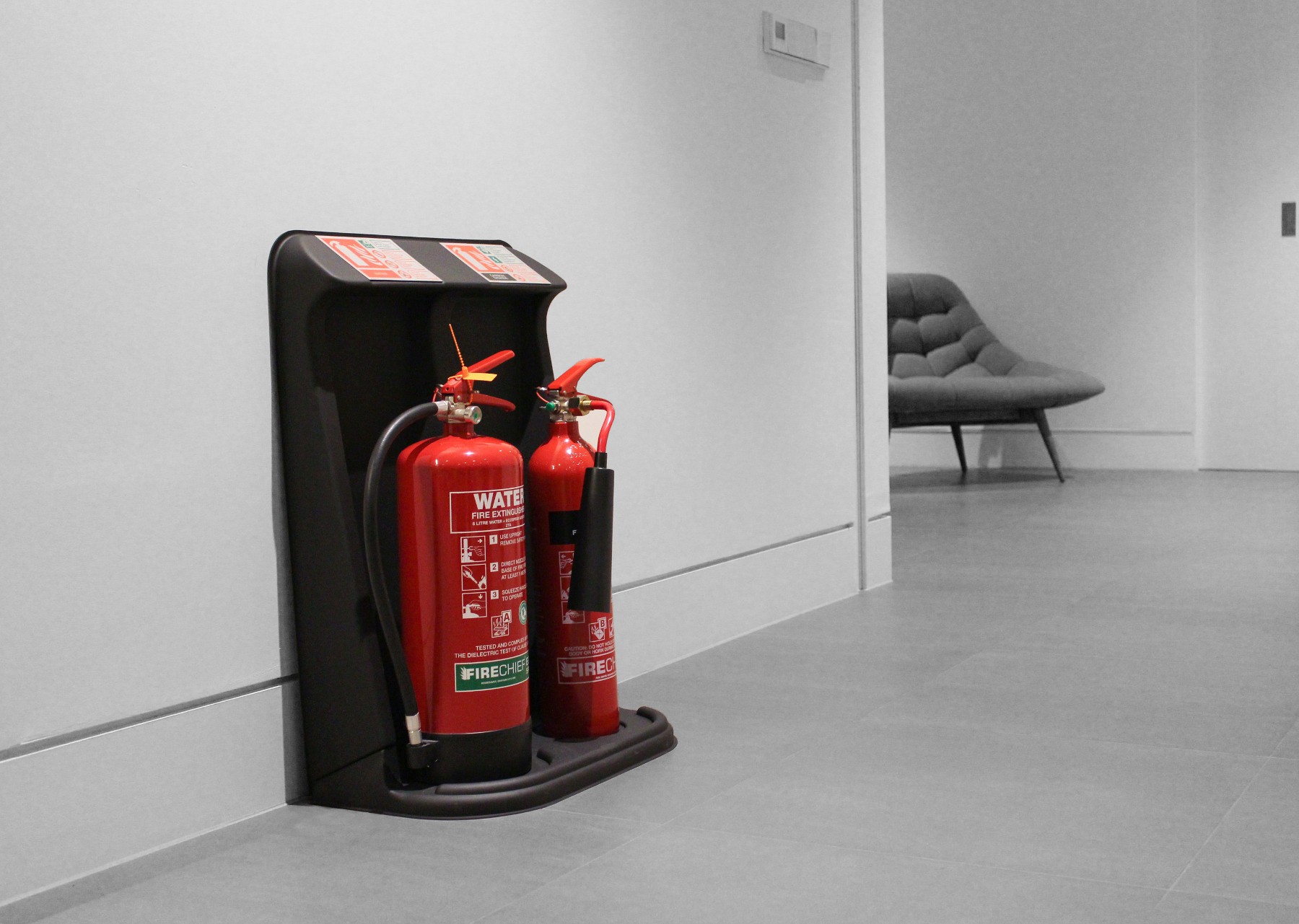Health and safety signs play an important role in indicating potential hazards and providing emergency information within a workplace or any location visited by members of the public. With many types of safety signs available it’s important to know what each sign means and how it should be used. Safety signs can be spotted in virtually all places of work and ensures the safety of staff, visitors, and the compliance of health and safety regulations.
In this comprehensive guide, we’ll explain what safety signs are, the different colour categories and their meanings, along with how and where they should be displayed.
The Different Types of Safety Signs

Prohibition Safety Signs
A prohibition safety sign is used to communicate a specific activity that should not be undertaken. Essentially, it’s a sign informing you of what not to do. Some prohibition signs include things like ‘no smoking’ and ‘no entry’. They’re recognised by their red colour and circular shape with a single diagonal line crossing through a black pictogram which indicates the action that’s forbidden. Prohibition signs are used in a wide range of internal and external locations aimed at both workers and members of the public.

Combination Safety Signs
A combination safety sign is one that conveys more than one message. For example, a safety sign that features both a ‘fire exit’ sign, which is an emergency sign, can be featured alongside a ‘keep clear’ sign, a mandatory sign. In this case it informs people where the fire exit is but also that it should be kept clear of obstruction to allow for easy access. The benefit of a combination safety sign is that it can increase the impact without appearing cluttered, which could lead to confusion.

Mandatory Safety Signs
A mandatory safety sign is displayed when an action is compulsory and must take place. Mandatory safety signs include ‘ear protection must be worn’ or ‘eye protection must be worn’. These types of signs are likely to be used in work environments such as manufacturing, construction, and agriculture with the intention of keeping workers and visitors safe. Mandatory signage is recognised by the circular shape and solid blue colour with a white printed instruction informing of the action that must take place.

Warning Safety Signs
Warning signs are placed in locations to identify hazards, actions or objects that could be harmful. Types of warning signs include ‘wet floor’ often used on a temporary basis to inform people of a potentially slippery surface, or ‘forklift trucks operating’ that can be used on construction sites. They inform people of the potential dangers within their nearby surroundings. Warning signs are a solid yellow colour in a triangular shape with a black pictogram and warning message.

Emergency Safety Signs
Emergency safety signs convey information such as the location of first aid equipment and defibrillators along with emergency exits and fire assembly points. Some emergency signage is illuminated to assist people when normal visibility could be impaired through lack of light or smoke. This helps staff and members of the public to make quick decisions in the event of an emergency. Their shape is either square or rectangular in a solid green colour featuring a white printed message.

Fire Safety Signs
A fire safety sign is any form of sign that relates to fire safety whether that’s pointing out fire exits (an emergency sign), informing someone to keep a fire door closed (a mandatory sign) or highlighting that a fire extinguisher must not be used on a specific type of fire (a prohibition sign). This means that the colours, shapes and type of message will vary.

HSE Poster Signs
An HSE Poster must be displayed in a place of business that has employees. It’s necessary for it to be positioned somewhere where all staff members have easy access to it. If the workplace consists of several areas, a suitable location could be somewhere like a reception area or a communal area like a kitchen or cafeteria. In the event that a poster cannot be displayed, leaflets disclosing the same information should be shared to all employees. The aim of the poster is to communicate British Health & Safety laws alongside the responsibilities of both the employer and employee.
The Different Types of Fire Extinguisher Signs
Fire extinguisher signs would fall under the category of combination signs because they feature a range of different messages, typically prohibition and emergency. They are displayed directly next to the relevant canister and reflect the type of fire that the contents of the extinguisher can be used on.
This type of signage tends to be available in either rigid, wipe-proof plastic which can be screwed or drilled into a wall, or as a photoluminescent sign so that it glows in the dark in the event that excessive smoke limits visibility.

Water Fire Extinguisher Sign
Water fire extinguishers contain no harmful chemicals and their signage conveys that the contents can be used on wood, paper or textiles but should be avoided on fires caused by flammable liquids or metals, and live electrical equipment. You’ll often find these types of signs in locations with combustible materials such as offices and storage facilities.

Wet Chemical Fire Extinguisher Sign
Signs placed alongside wet chemical fire extinguishers inform a user that the contents can safely be used on cooking fats and oils along with other flammable solids. However, they should not be used on gas fires or those caused by flammable liquid or electrical equipment. Wet chemical signs are more commonplace in commercial food premises.

Carbon Dioxide Fire Extinguisher Sign
A carbon dioxide extinguisher sign lets people know that they are safe to use on flammable liquids like paint or solvents but not in confined spaces as their contents can be harmful if inhaled. They can also be used on live electrical fires but not on solid materials like wood and paper. These types of signs are often seen in places with a lot of electrical equipment.

Foam Fire Extinguisher Sign
Foam Extinguisher signs let you know that the contents of the canister can be used on fires caused by flammable substances. Whether that’s liquids like petrol, or solids such as textile materials. But their use should be avoided on flammable metals and electrical fires.

Dry Powder Fire Extinguisher Sign
Dry powder extinguishers are often labelled as ABC powder. That’s because they can be used on class A, B, and C fires which include solid combustibles, flammable liquids, electrical and gaseous fires. Their versatility means you may spot signs in various locations including offices, workshops and chemical storage facilities.
Safety Sign Colours
Safety signs are available in a range of colours and each colour helps with quick identification as to the type of message being communicated. Don’t forget they can also be displayed in combination to convey multiple messages within one sign.
Red Safety Signs
Red safety signs are prohibition signs informing people that they are prohibited from doing something, whether that’s smoking, entering a restricted area or using a mobile phone. Some of the most common prohibition safety signs you may have come across include the following:
- No Entry
- No Smoking
- No Parking
Green Safety Signs
Green safety signs, sometimes referred to as safe condition signs, are classified as emergency signage which indicate escape routes and the location of first aid equipment. Green emergency signs that you may be familiar with include:
- Emergency Exit
- First Aid
- Emergency Assembly Point
Yellow Safety Signs
Yellow safety signs are warning signs which help to communicate a potential hazard. This is to ensure people can take appropriate action to reduce risk and remain safe. Common yellow safety signs you’ve probably spotted around the workplace include the following:
- Caution Speed Ramps Ahead
- Caution Wet Floor
- Warning Trip Hazard
Blue Safety Signs
Safety signs coloured blue mean they are mandatory and convey an instruction that must be carried out. They ensure that businesses remain compliant with health and safety regulations and that staff and the public remain safe. Blue safety signs are often used on construction sites and include:
- Safety Helmets Must Be Worn
- Keep Locked
- Eye Protection Must Be Worn
How To Display Safety Signs
Whether it’s a wall mounted sign or floor sticker, the way a safety sign is displayed and its location are vital for maximum visibility. Below are some factors that could impact on where signage should be placed.
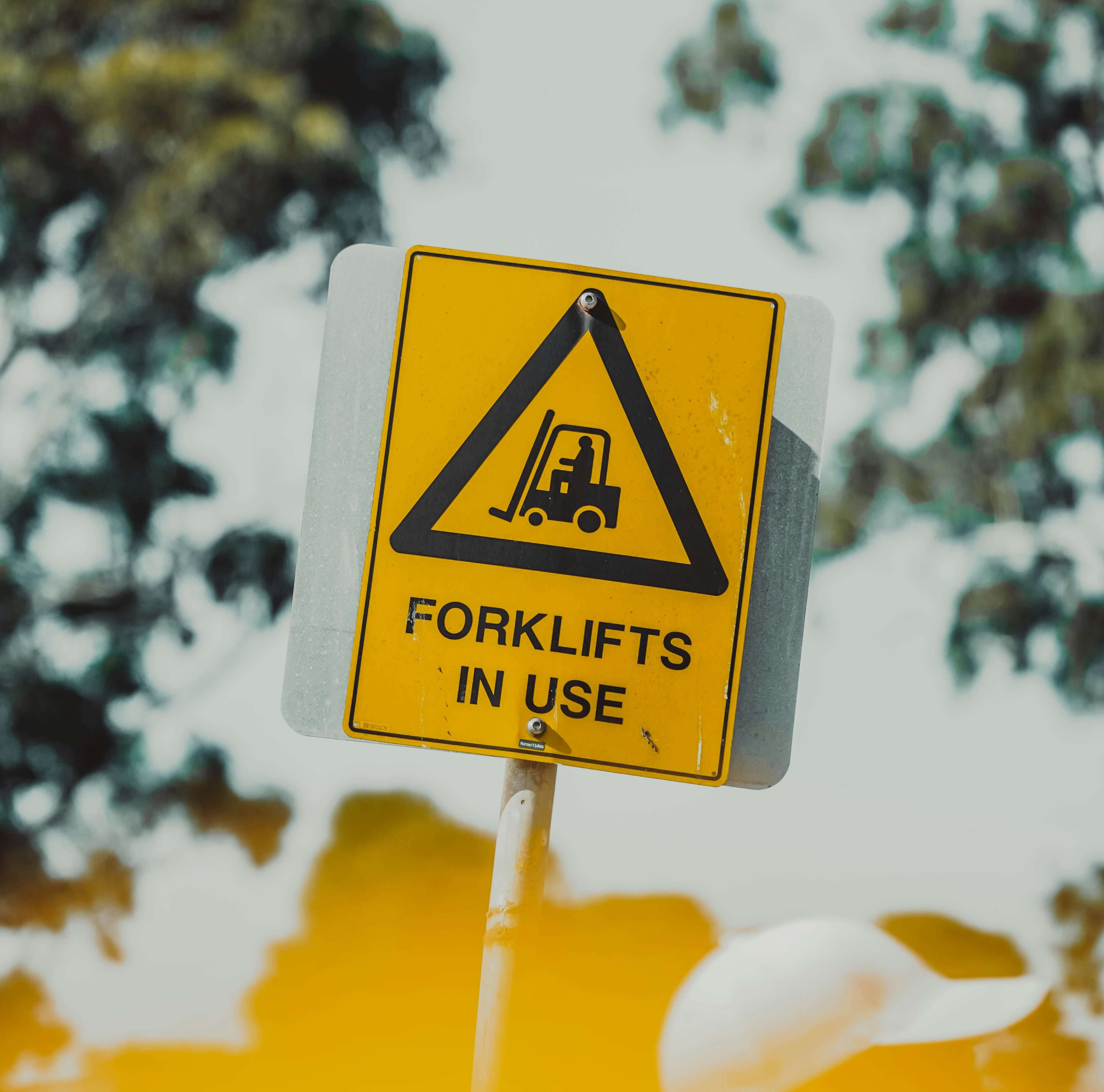
Safety Sign Location
The main location for any safety sign should be at the point immediately prior to a potential hazard or escape route. For example, an emergency exit sign would either be placed directly above the emergency exit door or pointing towards it. In the case of something like a ‘forklift in operation’ floor sticker, an ideal place would be positioned on the ground in a high footfall area and before the space where forklifts operate.
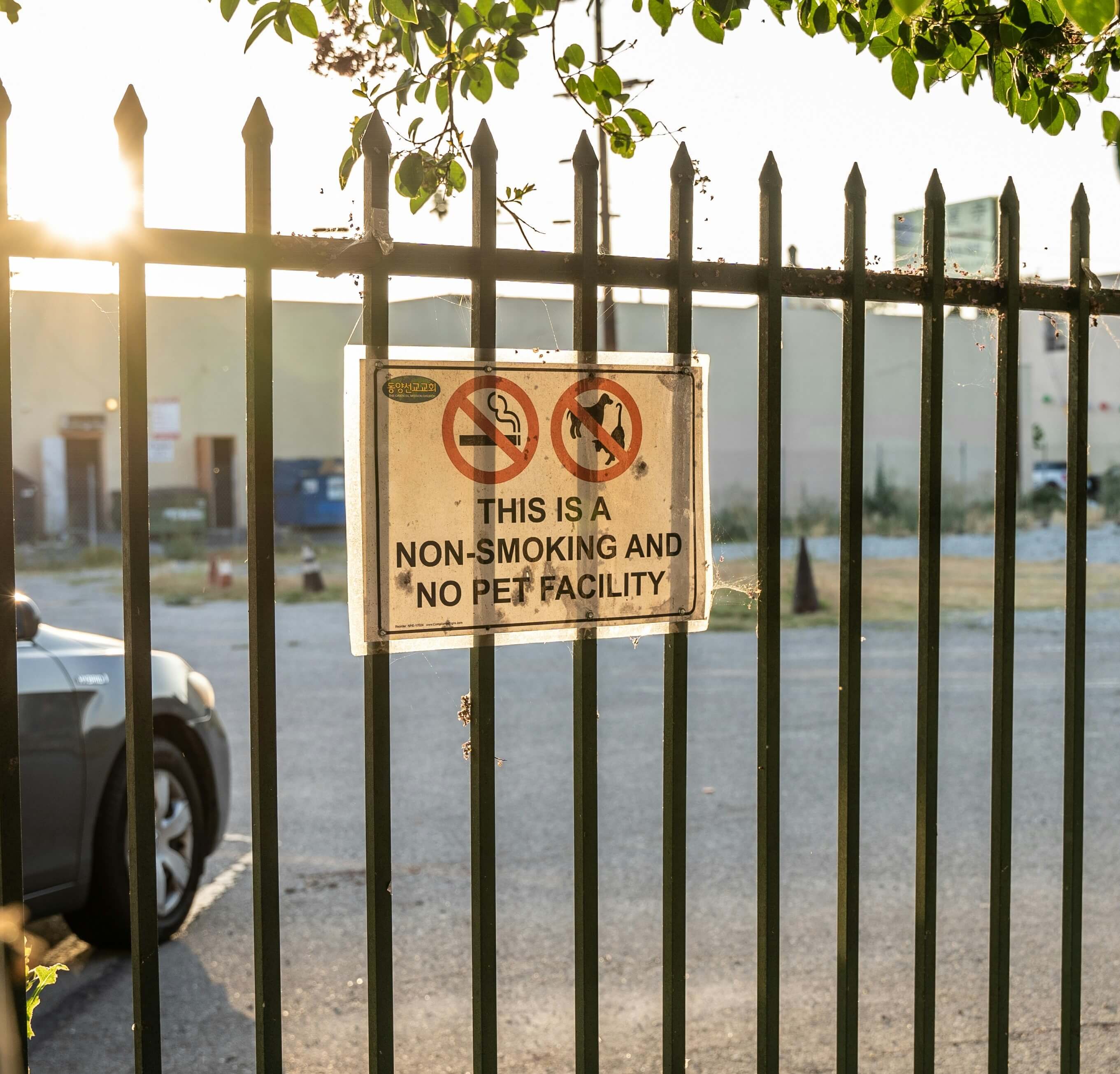
Safety Sign Visibility
The purpose of any safety sign is to be clear and visible to as many people as possible just before unsafe conditions or to highlight the location of health and safety equipment. They should be positioned free from any obstructions e.g. behind a doorway, and not grouped with other signage so they are obvious to all who need to see them.
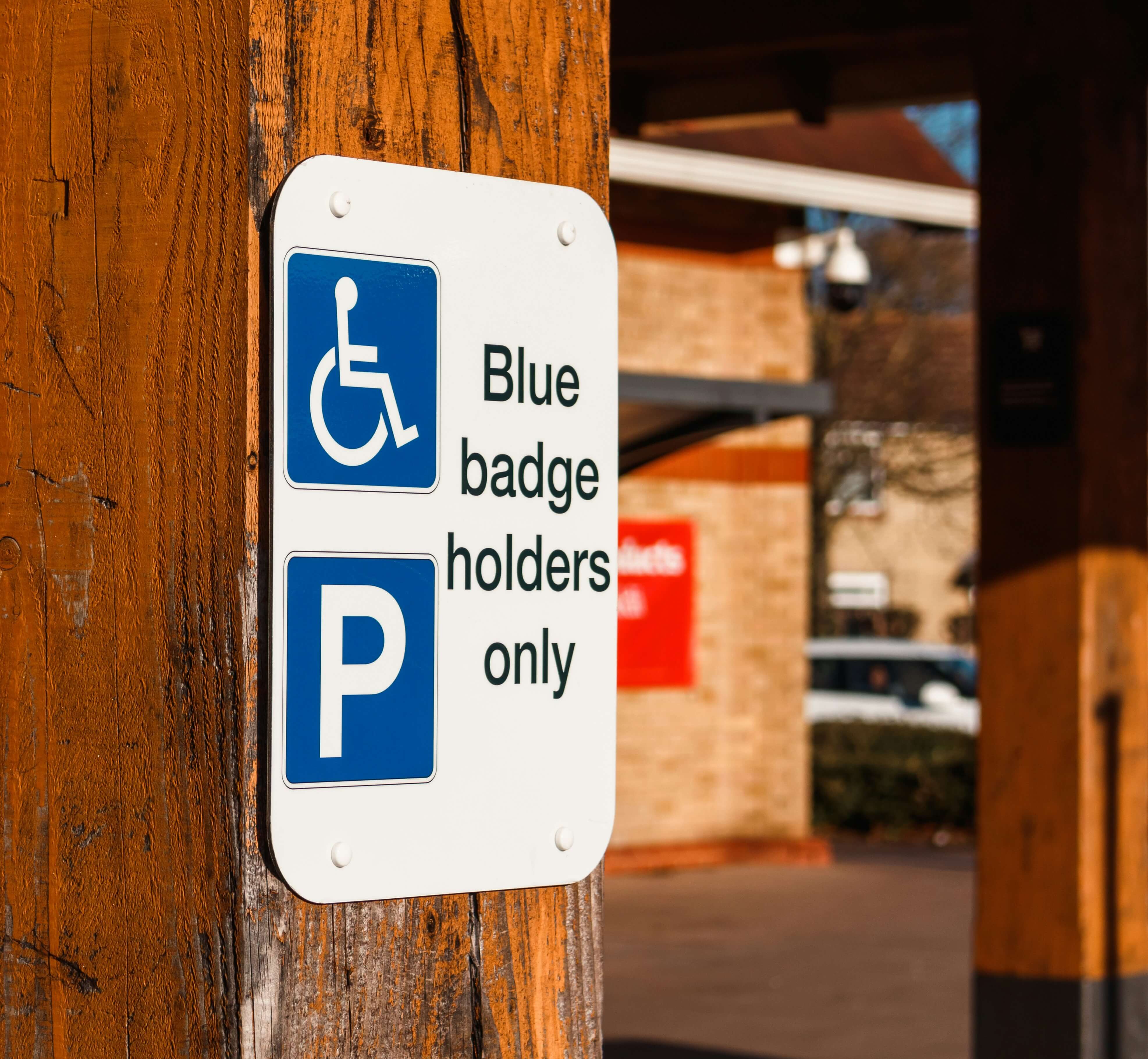
Safety Sign Height
Wall mounted safety signs should ideally be positioned at a height that is visible to the majority of people. While it’s tricky to ensure safety signs are at eye-level for everyone, a good rule of thumb is to place signs at around 6 ft. It’s a little different for exit signs as these need to be above doorways for a clear understanding of escape routes.
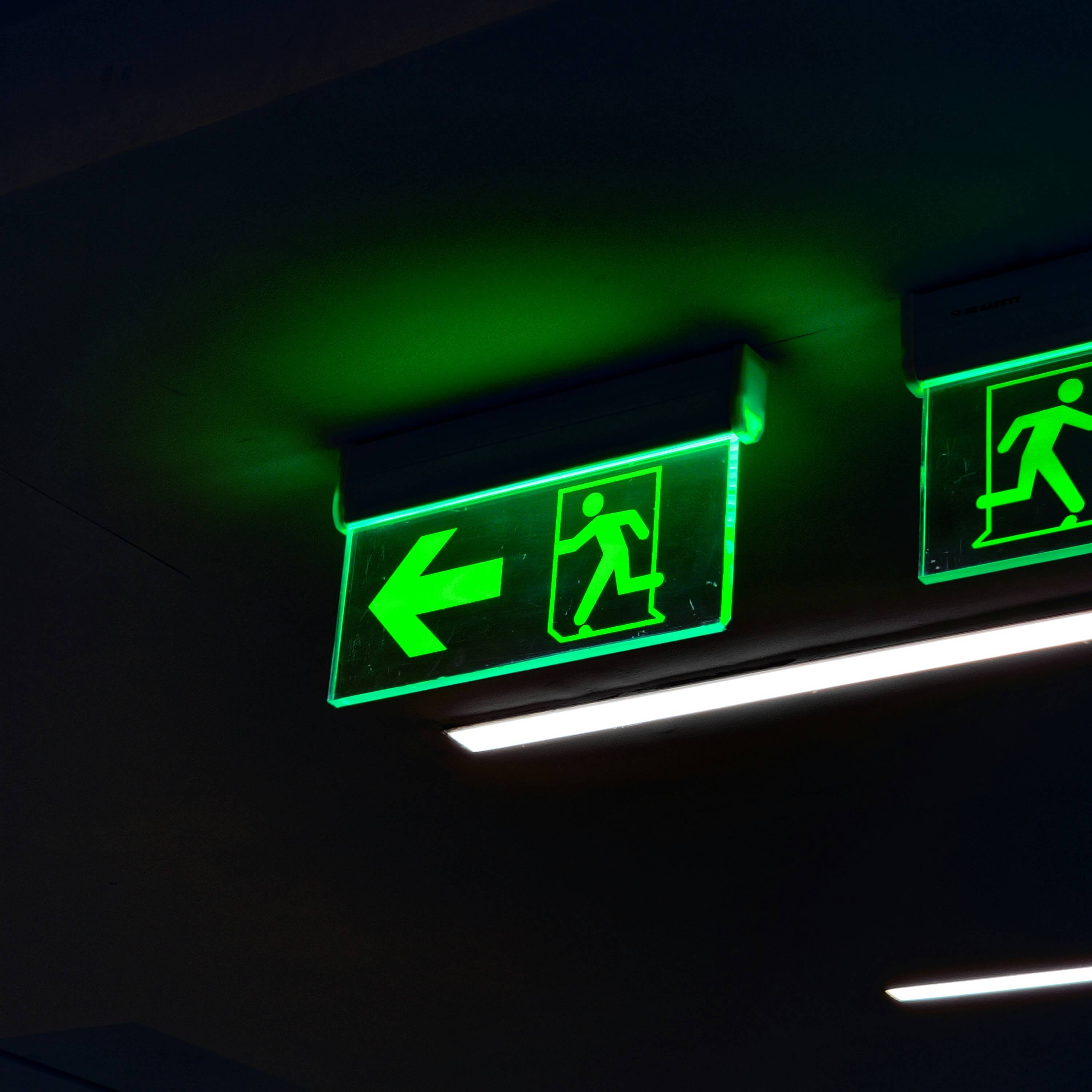
Safety Sign Illumination
In darker places and those with low-levels of light it’s sensible to use illuminated safety signs. These are made brighter with the use of LED lights and are useful to highlight things such as emergency exit routes. Another option is photoluminescent signs. These absorb energy from other light sources and glow in the dark without the need for a power source.
COSHH Symbols And Their Meanings
COSHH stands for Control of Substances Hazardous to Health and they are highlighted by way of symbols that appear on some safety signs within the workplace. Each symbol identifies the potential hazard or risk posed by chemicals or substances. Let’s take a look at what each symbol means.
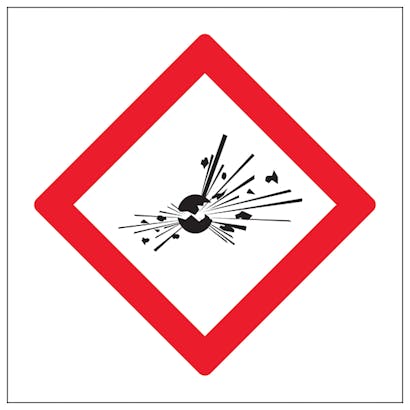
Explosive Symbol
An ‘explosion’ symbol that signifies that the substance within a container is potentially explosive. An example of an explosive substance is nitroglycerine.
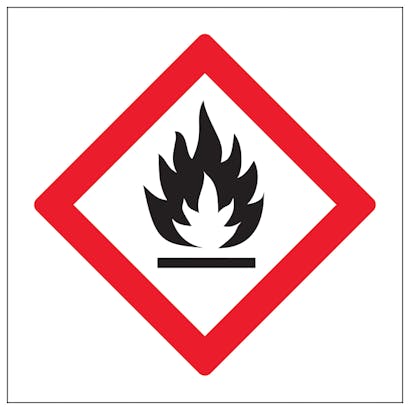
Flammable Symbol
This symbol is shown as a small ‘fire’ and indicates that the solid, liquid or gas in the container could ignite on contact or may have a low flash point. Flammable substances include things such as petrol or kerosene.

Oxidising Symbol
A small back circle with flames indicating that the substance is prone to oxidisation. This means it can react when mixed with oxygen. An example of an oxidising substance is hydrogen peroxide.

Gas Under Pressure Symbol
The symbol here shows a small gas canister which is solid black in colour. This shows that the container carries either liquified, dissolved, or compressed gas. Examples include liquid nitrogen or carbon dioxide.
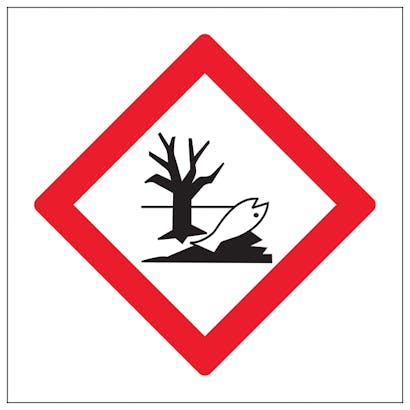
Environmental Hazard Symbol
This COSHH symbol shows a small fish alongside a tree and conveys that the substance could cause severe or long-term damage to the environment including marine life. Environmental hazard substances are things like pesticides and solvents.
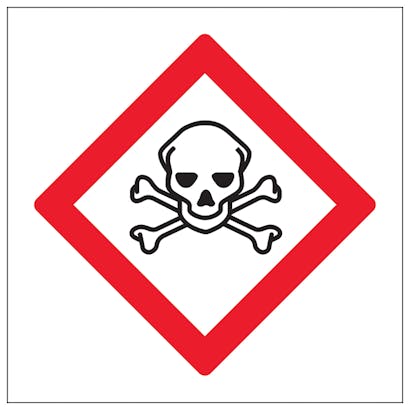
Toxic Symbol
The Toxic COSHH symbol is signified as a skull and crossbones and warns that the substance could be dangerous if swallowed, inhaled, or absorbed through your skin. Such substances include things like bleach or lead.
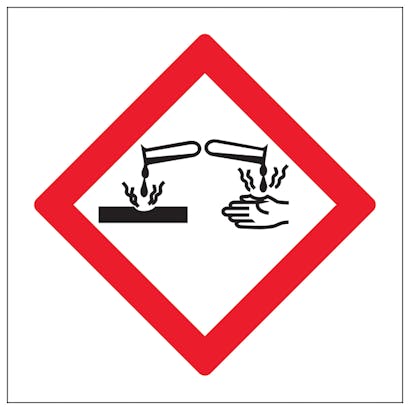
Corrosive Symbol
The corrosive symbol shows a hand and a solid surface being corroded by a chemical. This indicates that the substance is damaging to both metal and skin. Examples of corrosive chemicals are things like oven cleaners or drain cleaners.
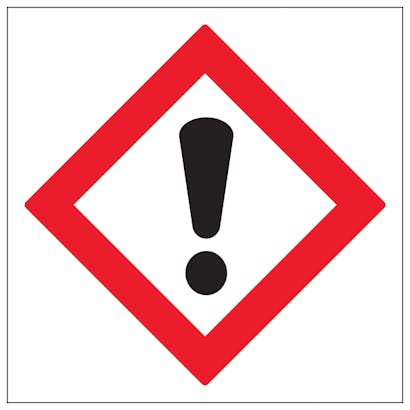
Health Hazard Symbol
This symbol shows an exclamation mark and shows that the substance may cause skin or eye irritation, inflammation, or skin conditions such as dermatitis. Health hazard substances include paints and detergents.
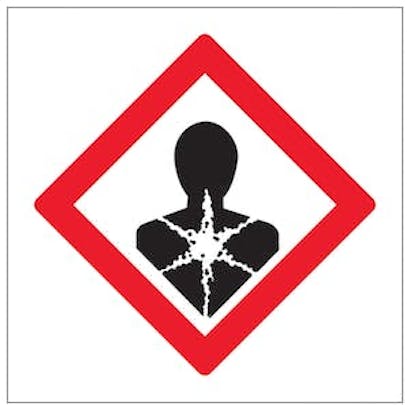
Serious Health Hazard
The serious health hazard symbols shows a person with white star-shape across their chest. These types of substances, such as ammonia or asbestos, can cause breathing difficulties or result in long-term health problems.
Key Safety Sign Considerations
Size & Viewing Distance
Where possible try and position smaller signs at around eye level, an average height of approximately 6ft would suffice. For medium to large safety signs, these can be mounted a little higher but ideally no lower than 2m which should allow for good visibility up to 18m.
British Standard Compliant
Under EU law it’s a requirement that all safety signs adhere to BS EN ISO 7010 regulations. This ensures that they all follow the same format with both symbols and colours which can minimise the potential for confusion or misunderstanding.
Safety Sign Material
Safety signs are available in a range of materials with each type offering their own benefits. PVC signs are waterproof and easy to wipe clean. Photoluminescent signs glow in the dark so they're great for areas with reduced visibility. Whereas A-board signs are perfect for temporary placement such as ‘warning wet floor’
Which Sign Do You Need
Prior to choosing the most appropriate safety signs, it’s common for risk assessments to be undertaken which help to determine potential hazards and, subsequently, the correct signage which should be displayed.
Safety Sign Impact
All safety signs should appear prominently with no obstructions impeding visibility. In the event that multiple signs should be conveyed in one location, consider using combination signs to increase their impact and understanding.
Maintenance
Over time, safety signs can become dirty and worn. Always ensure signs are clean, free from damage, legible, and easy to understand. In the case of illuminated signs, check them often so you know they’re working properly. Floor based stickers tend to wear much faster so may require replacement on a regular basis.














